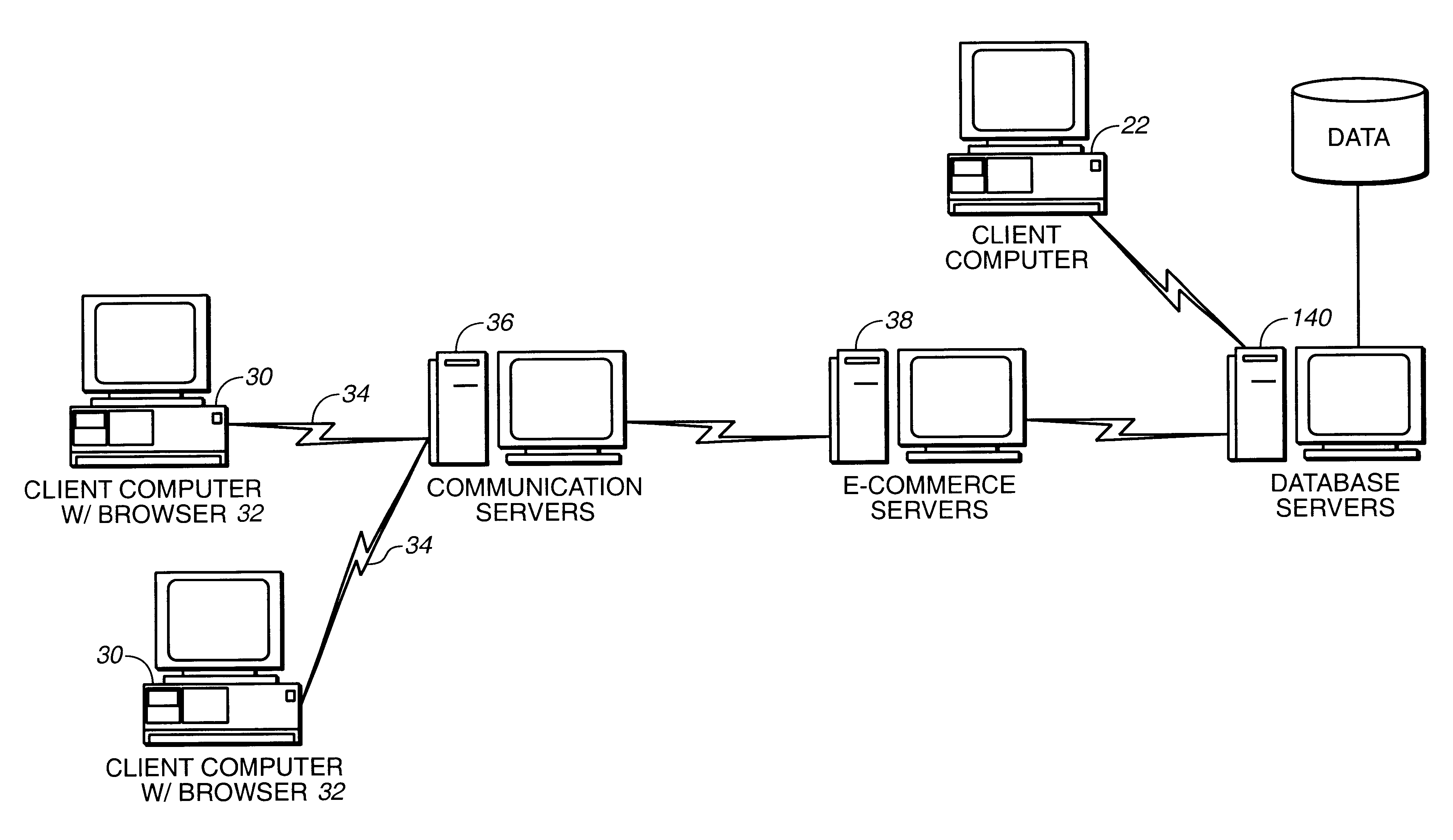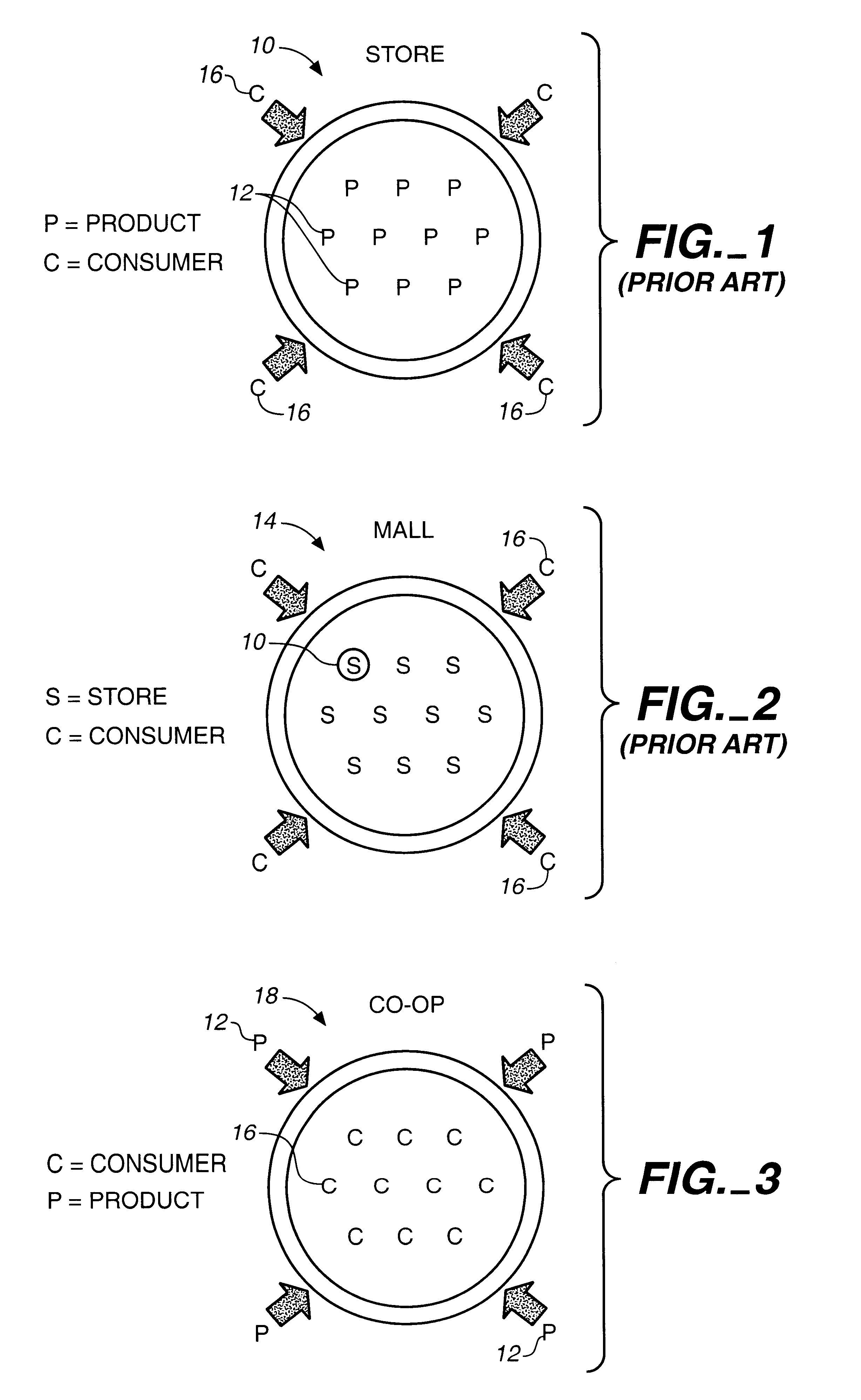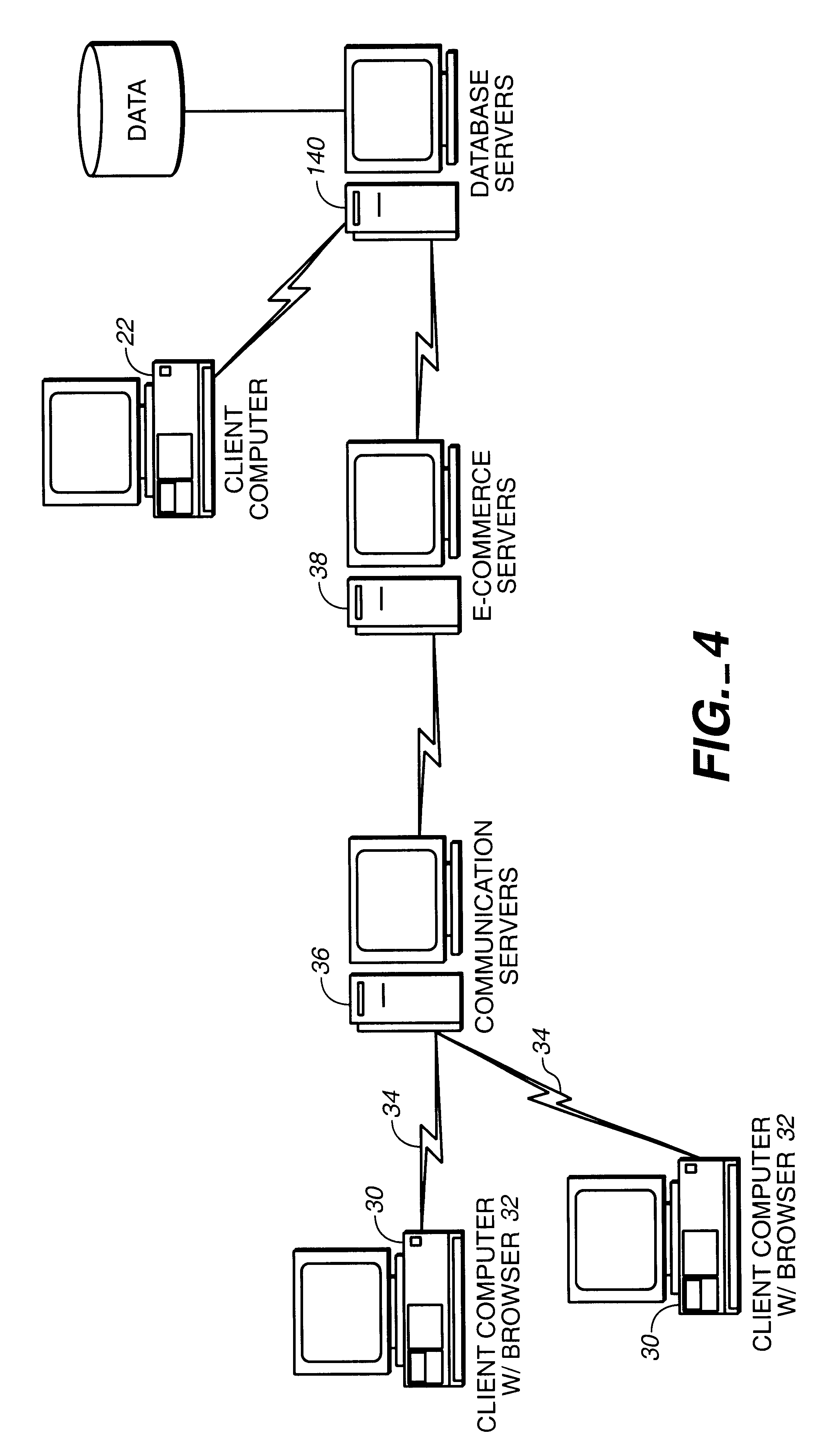Demand aggregation through online buying group
a technology of demand aggregation and online buying group, which is applied in the direction of instruments, buying/selling/lease transactions, data processing applications, etc., can solve the problems of limited extent to which people can aggregate demand for any given product or service, and no single mechanism through which people can quickly and conveniently crea
- Summary
- Abstract
- Description
- Claims
- Application Information
AI Technical Summary
Benefits of technology
Problems solved by technology
Method used
Image
Examples
Embodiment Construction
, taken together with the drawings, in which:
FIGS. 1 and 2 are simplified diagrammatic representations of prior art sales models, useful for understanding the present invention.
FIG. 3 is a corresponding simplified diagrammatic representation of a sales model in accordance with the invention.
FIG. 4 is a block diagram of an internetworked computer system for implementing the invention.
FIG. 5 is a block diagram of software components for implementing the invention.
FIG. 6 is a graph of a price curve useful for understanding operation of the invention.
FIG. 7 is a more detailed block diagram of a portion of the software components in FIG. 5 for implementing the invention.
FIG. 8 is a flow chart illustrating operation of a preferred form of a process in accordance with the invention.
FIG. 9 is a graph including a price curve and other relationships useful for understanding operation of a price change and the price visibility window in accordance with the invention.
DESCRIPTION OF SPECIFIC EMB...
PUM
 Login to View More
Login to View More Abstract
Description
Claims
Application Information
 Login to View More
Login to View More - R&D
- Intellectual Property
- Life Sciences
- Materials
- Tech Scout
- Unparalleled Data Quality
- Higher Quality Content
- 60% Fewer Hallucinations
Browse by: Latest US Patents, China's latest patents, Technical Efficacy Thesaurus, Application Domain, Technology Topic, Popular Technical Reports.
© 2025 PatSnap. All rights reserved.Legal|Privacy policy|Modern Slavery Act Transparency Statement|Sitemap|About US| Contact US: help@patsnap.com



